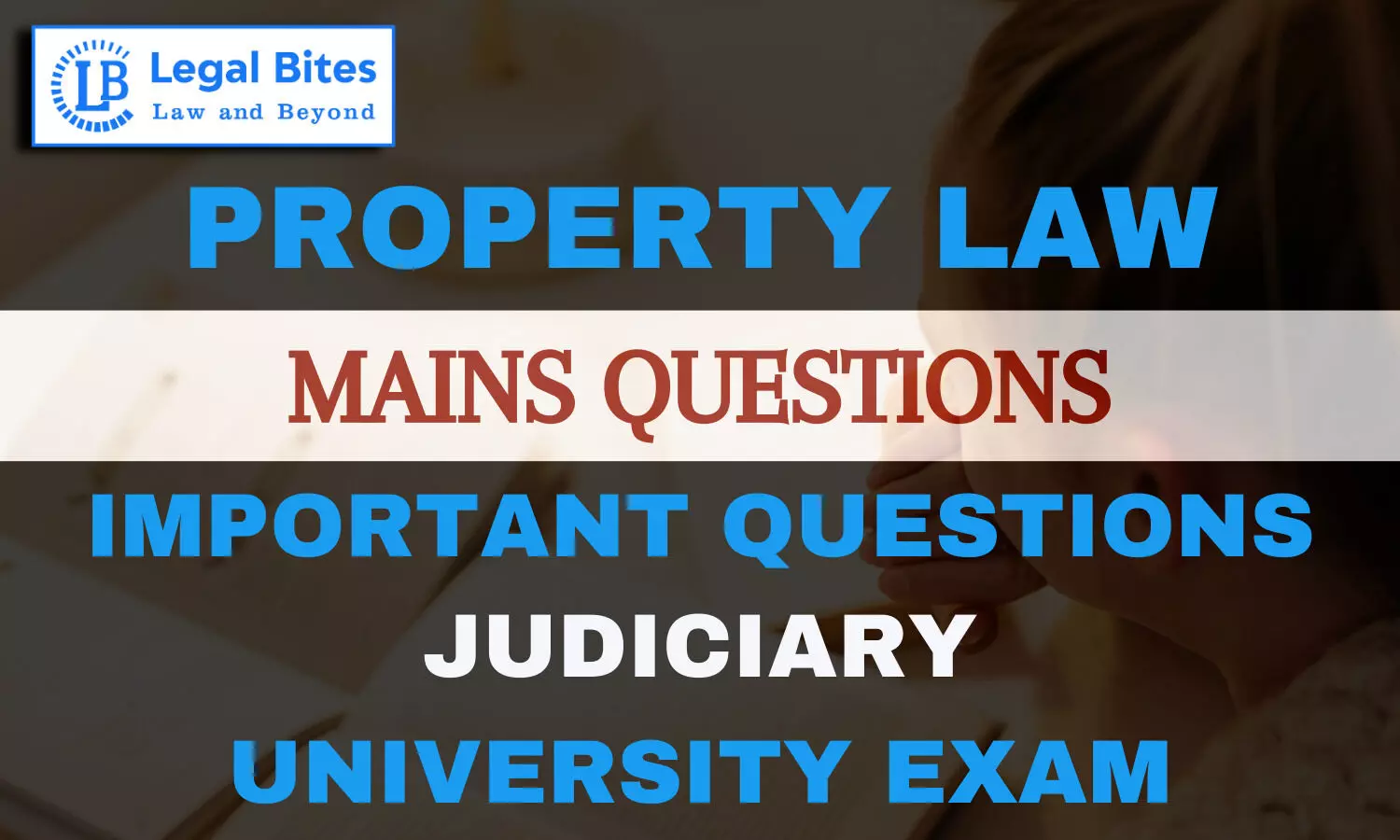Explain the terms Attestation, Notice and Subrogation under the Transfer of Property Act, 1882.
Find the answer to the mains question of Property Law only on Legal Bites.;

Question: Explain the terms Attestation, Notice, and Subrogation under the Transfer of Property Act, 1882. [MPJS 2021]Find the answer to the mains question of Property Law only on Legal Bites. [Explain the terms Attestation, Notice, and Subrogation under the Transfer of Property Act, 1882.]AnswerThe terms "Attestation," "Notice," and "Subrogation" in the context of the Transfer of Property Act, 1882 are essential legal concepts. Here's an explanation of each term:(a)...
Question: Explain the terms Attestation, Notice, and Subrogation under the Transfer of Property Act, 1882. [MPJS 2021]
Find the answer to the mains question of Property Law only on Legal Bites. [Explain the terms Attestation, Notice, and Subrogation under the Transfer of Property Act, 1882.]
Answer
The terms "Attestation," "Notice," and "Subrogation" in the context of the Transfer of Property Act, 1882 are essential legal concepts. Here's an explanation of each term:
(a) Attestation
Attestation refers to the process of witnessing the execution of a document by someone other than the parties to the document. As per Section 3 of the Transfer of Property Act, a document is said to be attested if two or more witnesses sign the document after seeing the executant (the person transferring the property) execute it, or if they receive a personal acknowledgment from the executant that they have executed the document.
Key elements of attestation:
- Witnesses: There must be at least two witnesses who attest the document.
- Execution: The witnesses must see the executant sign or acknowledge the execution of the document.
- Signature: The attesting witnesses must sign the document in the presence of the executant.
Example: A sale deed for immovable property must be attested by at least two witnesses for it to be valid.
(b) Notice
Notice refers to the awareness or knowledge of certain facts that could affect the rights of a party in a transfer of property. Section 3 of the Transfer of Property Act defines notice as the information that a person is expected to know either because it is brought to their attention directly (actual notice) or it is available through reasonable inquiry (constructive notice).
There are two types of notice:
- Actual Notice: When a person has direct knowledge of a fact, e.g., if a buyer is informed that the property is mortgaged.
- Constructive Notice: When a person could have discovered a fact through due diligence, e.g., checking public records for any encumbrances on a property before purchase.
Example: If a buyer purchases a property knowing that there is a pending legal dispute, they are said to have actual notice of that fact.
(c) Subrogation
Subrogation refers to the substitution of one person in the place of another with respect to a lawful claim or right. In the context of the Transfer of Property Act, subrogation is commonly used in relation to mortgages. It allows a person who has paid off a debt (such as a mortgage) to step into the shoes of the original creditor, thus acquiring the creditor's rights against the debtor.
There are two types of subrogation:
- Legal Subrogation: This happens automatically by operation of law, such as when a subsequent mortgagee redeems the prior mortgage.
- Conventional Subrogation: This occurs when there is an agreement between the parties that a third party who pays off the debt will be subrogated to the rights of the creditor.
Example: If "A" pays off "B's" mortgage on a property, "A" can be subrogated to the rights of the mortgagee and take over the mortgage rights from the original creditor.



